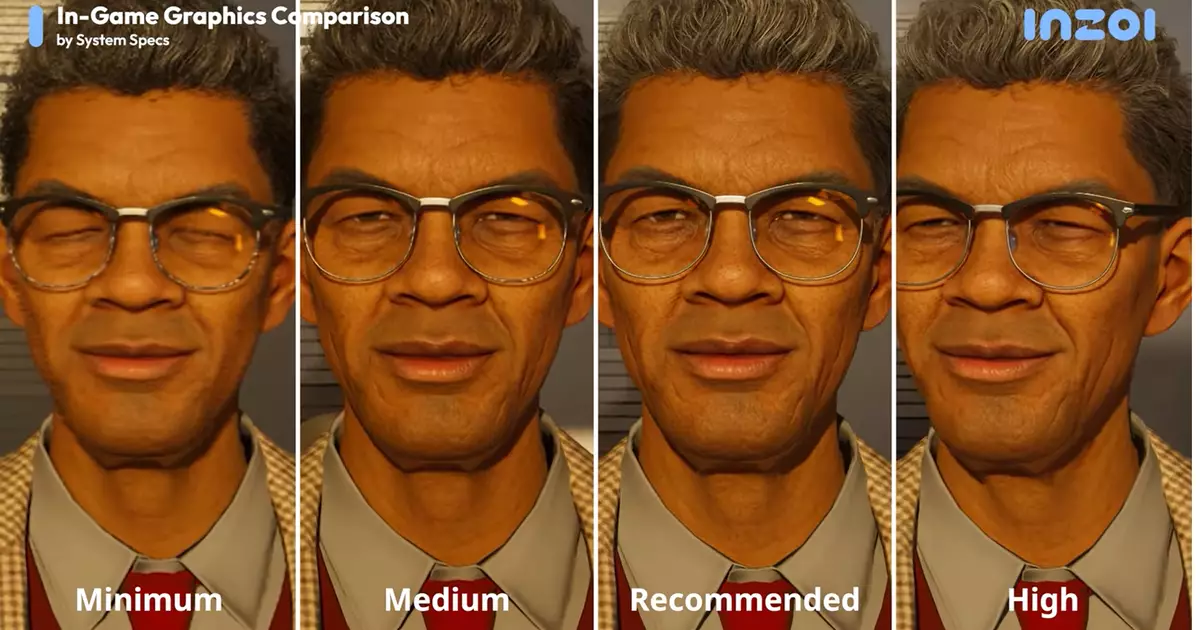As the gaming industry continues to evolve, generative AI has emerged as a pivotal trend. Krafton’s latest offering, inZOI, positions itself at the intersection of neighborhood simulation and AI-driven customization. This new life management game invites players into a dynamically crafted world where decisions, visuals, and interactions are influenced by AI intelligence. However, while this innovation opens doors to unique gameplay experiences, it also raises numerous questions about the ethical implications and possible ramifications of relying on AI in game development.
The notion of utilizing AI technologies to craft personalized items, from outfits to the behaviors of the in-game avatars—dubbed Zois—at first glance seems aligned with a creative utopia. Players can input various forms of media to enrich their gaming experience. Yet, the potential for misuse lurks beneath the surface. As AI becomes increasingly integrated into gameplay, concerns over the authenticity of creative expression and the potential manipulation of player experiences grow.
The Aesthetic Dilemma: Photorealism vs. Uncanny Valley
One particularly striking aspect of inZOI is its commitment to photorealistic graphics. On the one hand, this focus on realism can enhance immersion and create a captivating in-game environment. However, there’s also a darker side; the visuals often tiptoe into the Uncanny Valley—a phenomenon where lifelike but slightly off representations evoke feelings of discomfort. The marketing imagery, showcasing Zois that resemble fashion models, intensifies this effect, conjuring unsettling imagery akin to mannequins come to life.
Instead of enriching player experiences, these hyper-realistic characters can alienate them, derailing the emotional connection that such games typically foster. The idea of living among eerily perfect avatars raises a pressing question: does striving for realism manifest in a more captivating experience or merely mirror the unsettling realities of our screen-saturated lives, where genuine connections are frequently replaced by curated digital personas?
Hardware Challenges: Accessibility vs. Performance
Another critical factor at play is the aspect of accessibility in relation to system requirements. The specifications for inZOI hint at a gaming landscape where only those with high-end hardware may fully appreciate its offerings. While developers aim to create an optimized experience for players, the reality is that not everyone possesses the necessary technology to partake in this digital delicacy.
Acknowledging this dilemma, Krafton has proposed a feature designed to automatically adjust settings according to players’ capabilities, which is a commendable step toward inclusivity. Yet, many players reminisce about the joy of games that can run on any machine, offering charming graphics even when stripped of high-end capabilities. The beauty of games like *Minecraft* or *Stardew Valley* often lies in their ability to engage players regardless of their technical limitations.
As dedicated gamers, we often ponder: Is it time to embrace a “potato mode,” allowing aesthetic degradation to shine light on different artistic interpretations and unique gameplay experiences? There’s a fascinating beauty that emerges when games are forced to simplify their visuals—a reminder of the artistry behind minimalistic design.
The Future of Life Simulation Games
As inZOI prepares to enter early access, it stands amid a growing swell of curiosity and skepticism. Will it revolutionize how we engage with life simulation games, or will it fall victim to the pitfalls of overhyped technology and shallow interactions? Players crave depth and connectivity, and what remains to be seen is if this generative AI can deliver an engaging experience beneath its shiny exterior.
The reactions to progress in generative AI tools have typically oscillated between excitement and trepidation. With the evolution of inZOI, the looming uncertainty suggests that players must navigate a delicate balancing act between embracing innovation and safeguarding against the mechanization of their in-game lives. As the dialogue surrounding these technologies unfolds, it’s essential for players to reflect on their experiences and advocate for game design that cultivates creativity and authenticity—rather than merely mirroring the societal pressures they encounter offline. The trajectory of inZOI may define a new era of life simulation, but the questions it stirs echo far beyond the confines of its virtual world.

